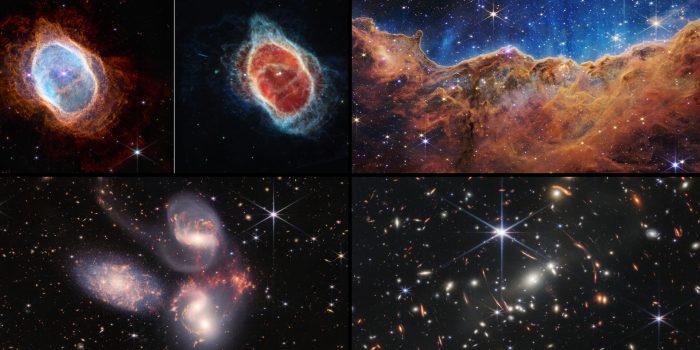Since its launch, the James Webb Space Telescope (JWST) has significantly improved our comprehension of far-off celestial worlds. Its most recent discovery is that tiny quartz nanocrystals have been found in the upper clouds of the burning gas giant WASP-17 b, which is located around 1,300 light-years from Earth.
As a hot Jupiter exoplanet, WASP-17 b revolves around its parent star, WASP-17, once every 3.7 Earth days. The exoplanet is exposed to severe radiation and extremely high temperatures due to its close closeness to its star.
This discovery marks the first-ever identification of silica (SiO2) particles within an exoplanet’s atmosphere, providing crucial insights into the formation and evolution of exoplanetary clouds. David Grant, a researcher at the University of Bristol and the first author, expressed enthusiasm about the unexpected revelation of quartz particles, a type of silicate, as cloud components in WASP-17 b’s atmosphere.

Silicates, including quartz, are widely found within our solar system and across various galaxies, constituting a significant portion of the composition of Earth, the Moon, and other rocky celestial bodies. In this case, the detected silicate grains were predominantly composed of quartz, unlike previous observations of magnesium-rich silicates.
The presence of silicates in exoplanetary atmospheres is intriguing, shedding light on the unique processes occurring in these distant alien worlds. Observations with the JWST’s Mid-Infrared Instrument (MIRI) unveiled that quartz crystals originate within WASP-17 b’s atmosphere, formed directly from gas due to the extreme heat and pressure conditions.

Despite the challenges in precisely determining the quantity of quartz and cloud coverage, this discovery holds immense potential for unraveling the exoplanet’s chemistry, geological history, and potential for habitability. Scientists foresee utilizing these insights to further comprehend the atmospheric conditions and compositions of exoplanets, contributing to our ever-growing knowledge of the cosmos.
The results of this groundbreaking discovery have been documented in the Astrophysical Journal Letters, showcasing the invaluable contributions of the James Webb Space Telescope to our understanding of the universe’s mysteries.


